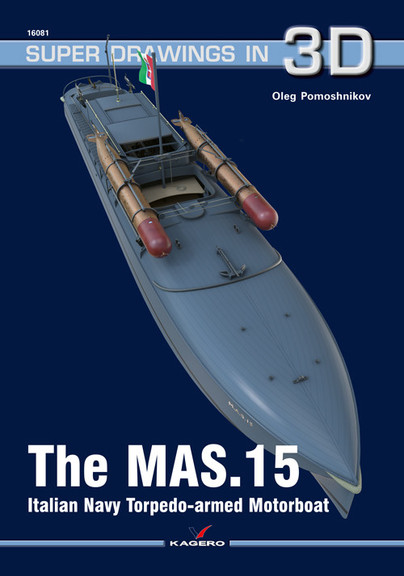
Format: Paperback
Pages: 56
ISBN: 9788366673366
Pub Date: 15 Jul 2021
Series: Super Drawings in 3D
Illustrations: 70 profiles, A4 drawing sheet
Description:
The limited basin of the Adriatic Sea favoured the operation of the light ships and various types of "microorganisms". The Italian naval command at the end of 1914 already drew attention to the combat capabilities of motor torpedo boats. The design of such a unit was presented in November, 1914, by the Italian company Maccia Marchini.
The cutter had a displacement of 7-8 tons, a length of 15 meters and was propelled by two engines, 200 HP each. It was supposed to reach a speed of 30 knots. The armament was two torpedoes dropped from both sides. However, the Italian Navy decided not to work with a small and not very well-known company.The fate of the project proposed in February, 1915, by the Venetian company SVAN (Società Veneziana Automobili Nautiche - Venetian Society of Self-Propelled Sea Boats) was different. Torpedo boat designed by engineer Atillia Bisio was somewhat reminiscent of the design of the Maccia Marchini company. It had a similar displacement (7.8 tons) and a length of 15 meters. The drive consisted of four engines with a power of 100 HP each, working on two propeller shafts. The armament was limited to two 450 mm torpedoes and one 37 mm gun.
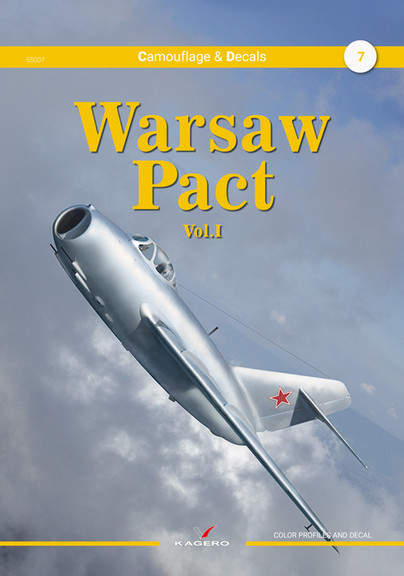
Format: Paperback
Pages: 40
ISBN: 9788366673434
Pub Date: 15 Jul 2021
Series: Camouflage & Decals
Illustrations: color profiles, free decal
Description:
The book contains color profiles of the MiG-15, MiG-17, MiG-19 and MiG-21 aircraft belonging to the Warsaw Pact country. The first volume includes machines from the USSR and Poland.
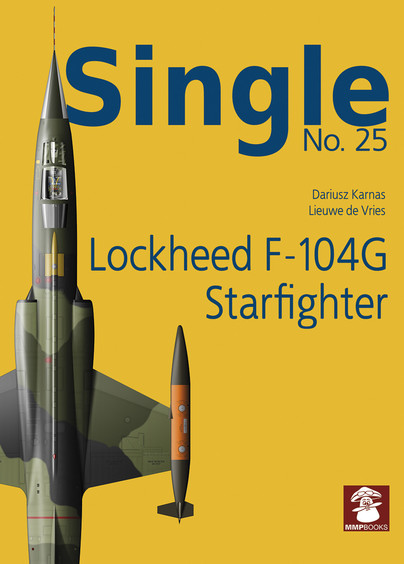
Format: Paperback
Pages: 24
ISBN: 9788366549289
Pub Date: 28 Apr 2021
Series: Single
Illustrations: Scale plans, color profiles, B&W photos, color photos
Description:
This book compiles the 4-view color profiles, scale plans, and photo details of the single variant of the Lockheed F-104G Starfighter. Scale plans in 1/72 scale plus drawings from wartime technical manuals. Also included are photos of the details in B&W and color.
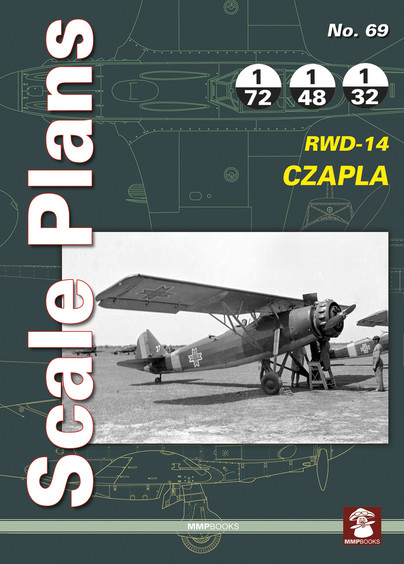
Format: Paperback
Pages: 24
ISBN: 9788366549395
Pub Date: 28 Apr 2021
Series: Scale Plans
Illustrations: Scale plans
Description:
Scale plans in 1/32, 1/48, and 1/72 of the Polish RWD-14 aircraft.8 A3 size scale plans of RWD-14 aircraft.
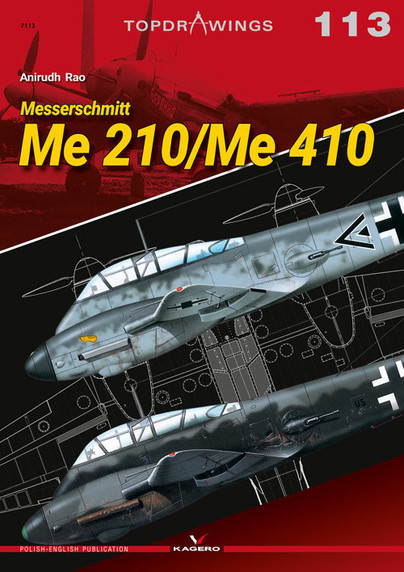
Format: Paperback
Pages: 20
ISBN: 9788366673281
Pub Date: 17 Apr 2021
Series: Top Drawings
Illustrations: drawing sheets, color profiles, poster
Description:
Messerschmitt Me 210 - German heavy fighter. Work on the design began in late 1930s with a goal of creating a versatile aircraft, equally capable as a fighter, dive bomber or a reconnaissance platform. The machine was an all-metal, low-wing monoplane, featuring twin vertical stabilizers.
Full-scale production of the Me 210 was launched in 1941. The aircraft was powered by a pair of Daimler-Benz DB 601F engines, each producing 959 kW of power. Messerschmitt Me 410 - German heavy twin-engine fighter and fast bomber, meant to be an improvement of the unsuccessful Me 210 design. The aircraft was equipped with new Daimler-Benz DB603A inverted V engines, rated at 1,750 and 1,850 hp. Powered by those engines the Me 410 was capable of speeds up to 628 km/h. The aircraft's armament consisted of two 7.92 mm MG 17 machine guns, a pair of 13 mm MG 131 machine guns and four remotely-controlled 20 mm MG 151 cannons. The Me 410 could also carry up to 1,000 kg of bombs. Thanks to its fairly long range and excellent performance characteristics, the aircraft was often employed in the bomber destroyer role.
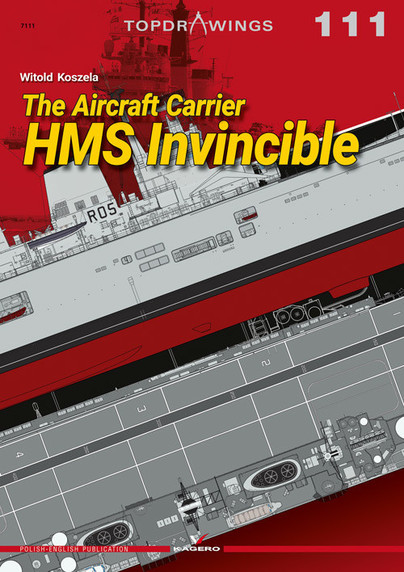
Format: Paperback
Pages: 28
ISBN: 9788366673267
Pub Date: 17 Apr 2021
Series: Top Drawings
Illustrations: drawing sheets, color profiles
Description:
HMS Invincible was the lead ship of a class of British light aircraft carriers built between 1973 and 1985, originally designed as "through-deck cruisers" (TDC). This set them apart from conventional helicopter-carrying ships of the time, which typically featured a flight deck in the aft section of the vessel. Invincible-class carriers were the world’s largest warships powered by gas turbines and featured a modular design which allowed replacement and upgrades of various elements of propulsion system and equipment without the need for any structural modifications of the hull.
A characteristic feature of the Invincible class was a "ski-jump" ramp at the end of the flight deck designed for VSTOL Sea Harriers, which at that time were state-of-the-art combat platforms. As designed, the ship was to carry five Sea Harriers and nine Sea King helicopters (six ASW variants and three transports).
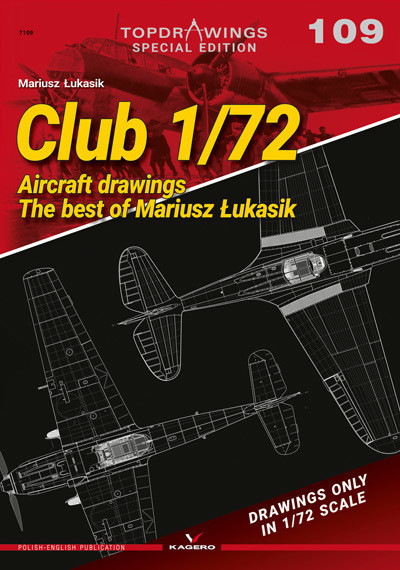
Format: Paperback
Pages: 124
ISBN: 9788366673199
Pub Date: 01 Apr 2021
Series: Top Drawings
Illustrations: drawing sheets in 1/72 scale
Description:
List of planes whose drawings are in the book: Hanschel Hs 123, Arado Ar 196, Messerschmitt Bf 109 A-D,Messerschmitt Bf 109 E, Messerschmitt Bf 109 E-B, Messerschmitt Bf 109 T, Messerschmitt Bf 109 F, Me 262 Schwalbe, Dornier Do 17/Do215, Curtis P-40, P-51 Mustang, SBD Dauntless, Ki 43 Hayabusa, Saab J29 Tunnan.
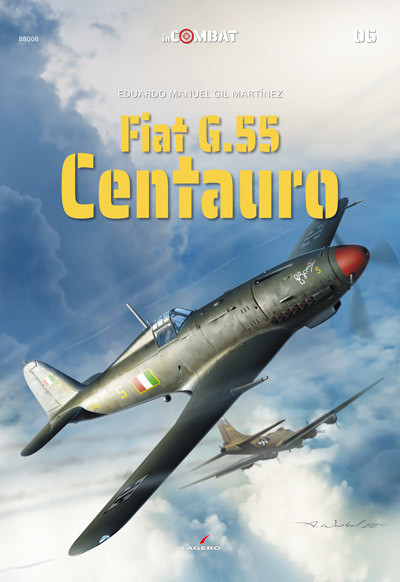
Format: Paperback
Pages: 82
ISBN: 9788366673250
Pub Date: 01 Apr 2021
Series: In Combat
Illustrations: 8 Drawing sheets, 9 color profiles, 156 archival photos, 3 maps, A4 poster
Description:
The Fiat G.55 Centauro was a single-engine single-seat World War II fighter aircraft. The FIAT G.
55 was a fighter whose merits were undoubtedly greater than those that can be deduced from the short building figures or from its use in service. The value of this aircraft was shown when after the WW2 it was ordered to FIAT to resume the manufacturing of the aircraft bringing to life a new G.55 versions named G.55A and G.55B.
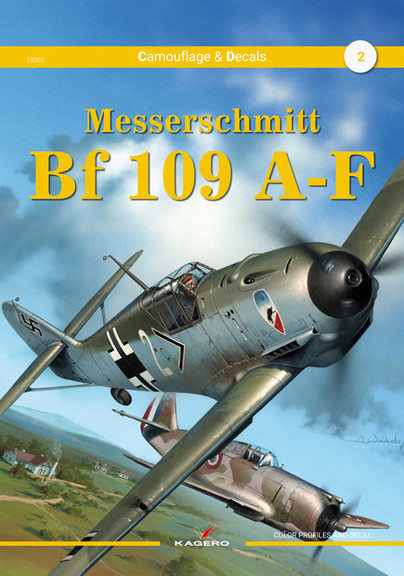
Format: Paperback
Pages: 40
ISBN: 9788366673212
Pub Date: 01 Apr 2021
Series: Camouflage & Decals
Illustrations: color profiles, free decal
Description:
The Messerschmitt Bf 109 was the most famous WW2 German fighter and a backbone of the Luftwaffe's fighter force. Its primary role was that of a high-speed, short-range interceptor. It first saw operational service in 1937 during the Spanish Civil War and was still in service at the dawn of the jet age at the end of World War II in 1945.
This book presents colour profiles of all versions from A to F and includes a decal sheet.
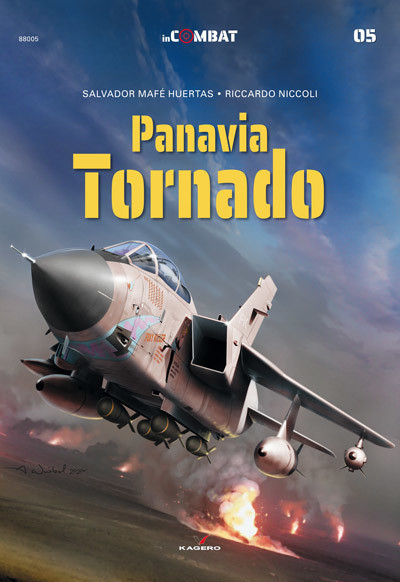
Format: Paperback
Pages: 68
ISBN: 9788366673175
Pub Date: 01 Apr 2021
Series: In Combat
Illustrations: Drawing sheets, 8 color profiles, 200 archival photos, poster
Description:
Panavia Tornado - a twin-engine fighter-bomber and a heavy, two-seater fighter plane with variable wing geometry produced in cooperation with Great Britain, Germany and Italy. There are three main versions of the Tornado aircraft: the Tornado IDS (Interdictor / Strike) attack version, the Tornado ADV (Air Defense Variant) interceptor version and the Tornado ECR (Electronic Combat / Reconaissance) electronic combat version.
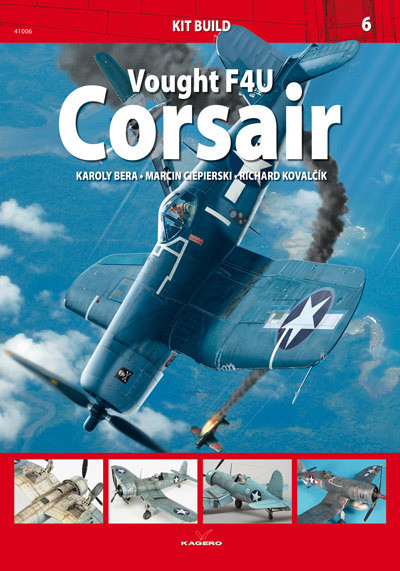
Format: Paperback
Pages: 64
ISBN: 9788366673243
Pub Date: 01 Apr 2021
Series: Kit Build
Illustrations: 120 photos, 8 color profiles, A4 poster
Description:
In February 1938, the United States Navy opened a competition for a new fighter. Its maximum speed and operational ceiling were to exceed all the machines that the American aviation had at the time. Among others, the Chance Vought company entered the competition.
The Corsair was designed by a team of engineers led by Rex Beisel, the company's chief constructor. The prototype XF4U-1 was flown on May 29, 1940. The Corsair was powered by an eighteen-cylinder Pratt & Whitney R-2800 Double Wasp, the largest and the most powerful radial engine ever installed in a single-seat front fighter.
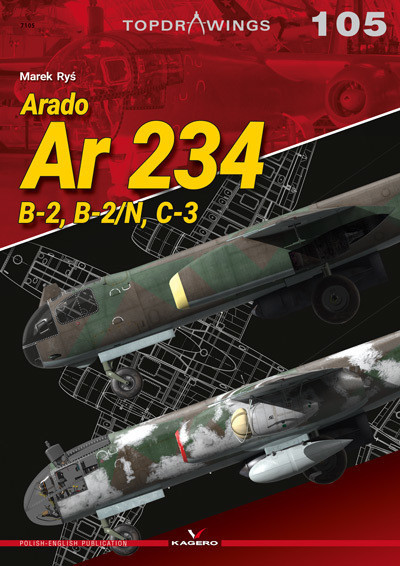
Format: Paperback
Pages: 20
ISBN: 9788366673021
Pub Date: 31 Jan 2021
Series: Top Drawings
Illustrations: drawing sheets, color profiles
Description:
As the first functional jet engines became available, the RLM published a requirement for a reconnaissance aircraft capable of long-range patrols over Britain, all the way up to Scapa Flow. The task to build the machine was given to Arado, who put Rüdiger Kosin in charge of the design team. The initial E370 project was gradually tweaked and modified until it evolved into its final form as a single-seat aircraft powered by two jet engines in underwing pods, designated Ar 234.
In order to maximize the aircraft’s range, Arado’s design team embarked on a radical weight-shedding crusade. Among the components eliminated from the design was the conventional landing gear, which was replaced with a jettisonable three-wheel trolley used for take-offs and retractable skids mounted under the fuselage for landings. These design features were incorporated into the first A series prototypes, powered by Junkers Jumo 004A engines. The B-2 was a bomber version, with a maximum bombload of 1,500 kg and the B-2/N a night fighter version. The C-3 was the multi-purpose version, armed with two 20 mm MG 151/20 cannons beneath the nose.
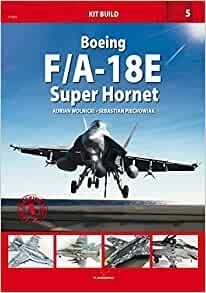
Format: Paperback
Pages: 56
ISBN: 9788366673137
Pub Date: 31 Jan 2021
Series: Kit Build
Illustrations: 132 photos, 10 color profiles, masking foil
Description:
Designed and initially produced by McDonnell Douglas, the Super Hornet first flew in 1995. It is used by the United States Navy and theRoyal Australian Air Force. The Boeing F/A-18E and F/A-18F Super Hornet are twin-engine, carrier-capable variants based on the McDonnell Douglas F/A-18 Hornet.
The F/A-18E single-seat variants are larger and more advanced derivatives of the F/A-18C and D Hornet. The Super Hornet is a new aircraft at about 20% larger and 3,200 kg heavier empty weight than the original Hornet. It carries 33% more internal fuel, increasing mission range by 41% and endurance by 50% over the "Legacy" Hornet. To aid safe flight operations and prevent confusion in radio calls, the Super Hornet is informally referred to as the "Rhino" to distinguish it from earlier Hornets. It is designed to be equipped with an aerial refueling system (ARS) or "buddy store" for the refueling of other aircraft.
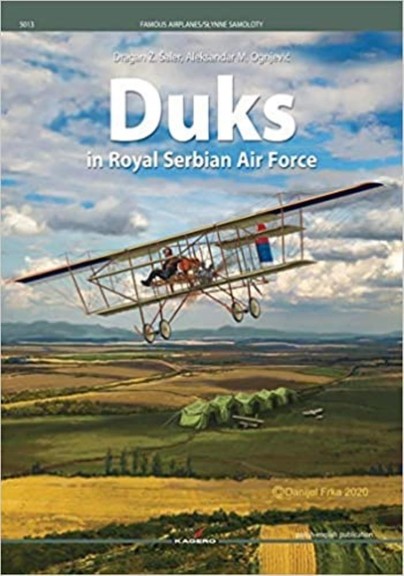
Format: Paperback
Pages: 72
ISBN: 9788366673113
Pub Date: 31 Jan 2021
Series: Famous Airplanes
Illustrations: Color profiles, diagrams, and archival photos
Description:
In mid-1909, Meller's factory made the first aircraft, according to the brothers Wright model of Flyer A. It was constructed by experienced factory engineer Jevgrafov (Н.П.
Евграфов). He was already engaged on the project and construction of the Duks airship "Jastreb" (Ястреб), so that he was familiar with all the structural elements of aircraft. The test flights were not performed because the factory couldn't provide the appropriate engine. The aircraft was nevertheless shown at an aviation exhibit at the end of 1909, together with the aircraft of famous manufacturers from Europe. Meller realized on time that Russia could not long fall behind the advanced European countries in the aeronautics development, especially the military one. His plan was that the Duks factory should soon start producing aircraft in larger series, initially under license. The problem was that he should choose the right model of the many that broke records every day in those years. During 1910, Henry Farman "HF III" aircraft became extremely popular in France, despite their structural imperfection. They were made in two versions, for training and for competition. They had a series of record flights and they often won prizes on many aeronautical competitions. They served as models to many constructors even beyond the borders of France. It was this very aircraft that Meller chose for serial production.
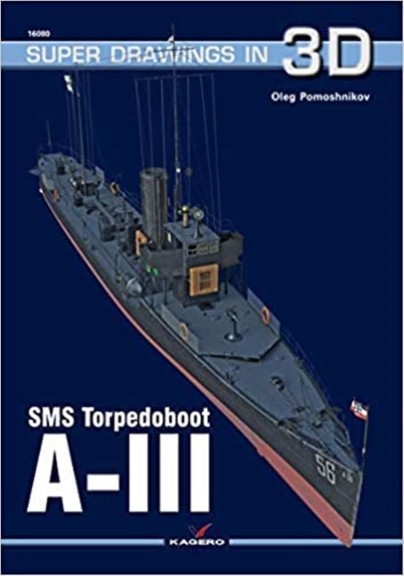
Format: Paperback
Pages: 56
ISBN: 9788366673120
Pub Date: 31 Jan 2021
Series: Super Drawings in 3D
Illustrations: 102 profiles, B2 drawing sheets
Description:
In the year 1894, Germany built the last small torpedo boat in the 19th century. Then there was an over 20-year hiatus. Only in 1915, due to the emergence of a new theater of military operations, the construction of a series of 25 small A I torpedo boats had begun.
Their construction was entrusted to the Vulcan AG shipyard in Hamburg, some of them dismantled and sent by rail to Hoboken shipyard in Antwerp, where they were finally assembled and put into operation for the fleet. The situation that arose in 1914 after the seizure of the Belgian coast by the German army forced the local naval command to send appropriate forces to the new maritime theater. Already at the beginning, it turned out that the specificity of this reservoir (numerous shallows and many mine barriers) almost precludes the use of standard torpedo boats and destroyers. They were simply too big and their draft was too great, which put them in a huge danger of hitting mines. The newly designed Type A I units were to be better adapted to operate off the coast of Flanders. Their full displacement was 137 tons, and the length of the hull was 41.58 m. Driven by a steam engine with a capacity of 1200 HP, it reached the speed of 19–20 knots. The armament consisted of a 50mm or 52mm cannon and two 450mm torpedo tubes.
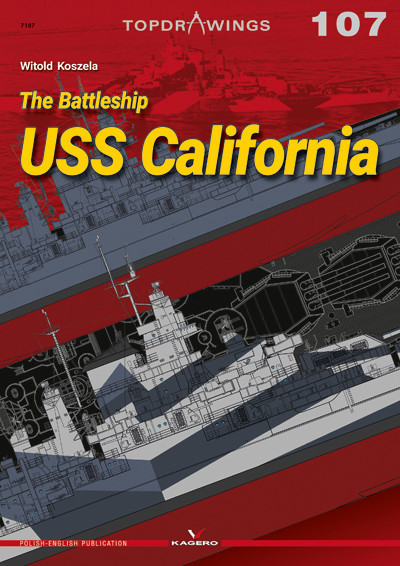
Format: Paperback
Pages: 24
ISBN: 9788366673090
Pub Date: 31 Jan 2021
Series: Top Drawings
Illustrations: drawing sheets, color profiles
Description:
The American battleship USS “California” has almost thirty years of extraordinary history. Built in 1921, it was one of the most powerful battleships of the US Navy in the interwar period. It was characterised by an interesting and harmonious silhouette, which changed significantly several times.
During the war, despite its age, the ship was still modern and heavily armed. The USS “California”, known among naval enthusiasts and often chosen by modellers, became the subject of another study by Witold Koszela, who in a series of precise drawings recreated the silhouette of this battleship from the Second World War. On 24 A4 pages and 2 folded sheets we can find a historical description, technical data and professional drawings showing the ship in the years 1944–1945, as well as drawings of superstructures, armaments and details, together with sectional views and color charts.

















